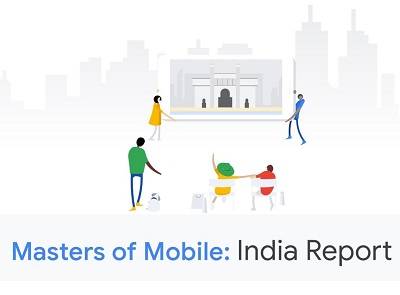Indian mobile websites score high on page design, but low in speed: Google
With the rising influence of mobile, consumer experience is playing a critical role in mobile-commerce. Mobile sites have become important storefronts for brands, and customers’ buying decisions are determined by seamless search and purchase journeys on their devices. However, are Indian mobile websites equipped to handle consumer need? Do they offer coherent search and purchase paths? Do they match international standards and apply global best practices?
A Google-commissioned study from Accenture Interactive benchmarks over 110 Indian mobile websites across three verticals - financial services, retail and commerce, and travel. The study aimed to rate them against specific attributes, viz. Findability, Product Page Design, Registration and Conversion, Mobile Design and Speed. The study found that on average, Indian mobile websites score very well on Product and Mobile Page design (80%), Findability (69%), and Registration and Conversion (73%). However, they fell behind when it comes to Speed, scoring only 55% compared with other Asia-Pacific mobile sites. The study further found that average mobile site performance for the retail sector is highest at 70%, whereas the travel and finance sectors stood at 65% and 63% respectively.
According to the study, brands that are unable to prioritise great mobile experiences run the risk of poor conversions. The study states that 86% of Indian consumers are likely to make purchases on mobile sites that have made search and purchase processes seamless. If not, brands face 20% drop in conversions for every second of delay in mobile page load-time and 53% consumers leave a mobile site that takes longer than three seconds to load.
Sharing insights on how brands can improve their mobile webpage speed, Vikas Agnihotri, Country Director - Sales, Google India, said, “Smartphones are a catalyst for consumers to research and carry out commerce online today. It’s up to marketers to prioritise a seamless mobile web experience to retain consumers with content and speed. Brands must counter the top three barriers of slow speed, slow server times and lack of caching policy, to build a strong connection with their consumers, improve conversions and build stickiness.”
The Google-commissioned study from Accenture Interactive also cited top recommendations that can help significantly improve mobile experience for customers. For example, 74% of the retail and ecommerce sites can improve registration and conversion rate by creating an account. Similarly, 59% of the retail and ecommerce sites can improve registration and conversion by allowing users to purchase products as guests. In the travel space, by providing search steps or guidance when there are no matching search results, 78% of the sites surveyed can improve findability for brands. And, by avoiding displaying desktop pages on mobile browser, 36% of the finance players surveyed can improve their mobile design.
The study also shared tips from the most visited mobile sites to help brands match their mobile performance:
Identify where customers typically drop off on their user journey using quantitative analyses, like web analytics reports, and qualitative analyses.
Engage in user testing to understand common customer pain points in the five user experience categories.
Get help: The Web Fundamentals site is a great place for usability, inspiration, latest tools and technologies, and guidance that can be leveraged to solve customer pain points.
Test and iterate: Commit to continuous testing and improvements to the mobile website, as delighting users with great user experience is never a one-off process!
Monitor the mobile site’s speed regularly with Webpagetest or through analytics reports.
Study Methodology
The study reviewed over 720 most visited mobile sites across 15 countries in Asia-Pacific. Websites were rated based on 80 user experience best practice guidelines, as well as their speed. Individualising how brands can increase site speed, the study proposes to lighten the website by compressing textual and image assets; identify and remove backend performance bottlenecks; and Cache static objects like images to avoid repetitive browser requests.













Share
Facebook
YouTube
Tweet
Twitter
LinkedIn